Related Research Articles
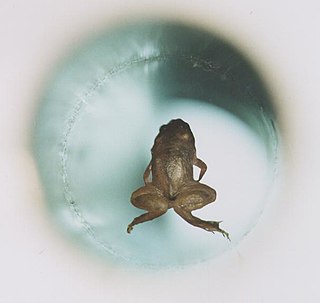
The Ig Nobel Prize is a satiric prize awarded annually since 1991 to celebrate ten unusual or trivial achievements in scientific research, its stated aim being to "honor achievements that first make people laugh, and then make them think." The name of the award is a pun on the Nobel Prize, which it parodies, and on the word ignoble.
Johann Deisenhofer is a German biochemist who, along with Hartmut Michel and Robert Huber, received the Nobel Prize for Chemistry in 1988 for their determination of the first crystal structure of an integral membrane protein, a membrane-bound complex of proteins and co-factors that is essential to photosynthesis.

Georg von Békésy was a Hungarian biophysicist.

Johannes Andreas Grib Fibiger was a Danish physician and professor of anatomical pathology at the University of Copenhagen. He was the recipient of the 1926 Nobel Prize in Physiology or Medicine "for his discovery of the Spiroptera carcinoma". He demonstrated that the roundworm which he called Spiroptera carcinoma could cause stomach cancer in rats and mice. His experimental results were later proven to be a case of mistaken conclusion. Erling Norrby, who had served as the Permanent Secretary of the Royal Swedish Academy of Sciences and Professor and Chairman of Virology at the Karolinska Institute, declared Fibiger's Nobel Prize as "one of the biggest blunders made by the Karolinska Institute."
Robert Huber is a German biochemist and Nobel laureate. known for his work crystallizing an intramembrane protein important in photosynthesis and subsequently applying X-ray crystallography to elucidate the protein's structure.
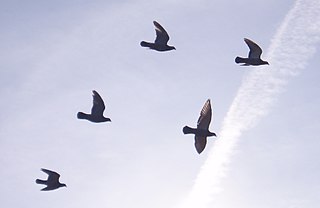
Magnetoreception is a sense which allows an organism to detect a magnetic field to perceive direction, altitude or location. This sensory modality is used by a range of animals for orientation and navigation, and as a method for animals to develop regional maps. In navigation, magnetoreception deals with the detection of the Earth's magnetic field.
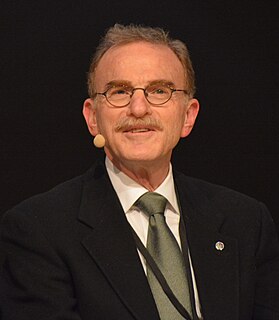
Randy Wayne Schekman is an American cell biologist at the University of California, Berkeley, former editor-in-chief of Proceedings of the National Academy of Sciences and former editor of Annual Review of Cell and Developmental Biology. In 2011, he was announced as the editor of eLife, a new high-profile open-access journal published by the Howard Hughes Medical Institute, the Max Planck Society and the Wellcome Trust launching in 2012. He was elected to the National Academy of Sciences in 1992. Schekman shared the 2013 Nobel Prize for Physiology or Medicine with James Rothman and Thomas C. Südhof for their ground-breaking work on cell membrane vesicle trafficking.
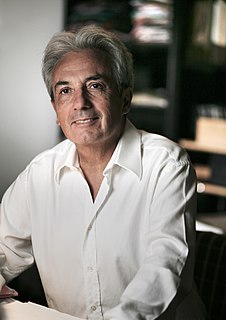
Albert Fert is a French physicist and one of the discoverers of giant magnetoresistance which brought about a breakthrough in gigabyte hard disks. Currently, he is an emeritus professor at Paris-Saclay University in Orsay, scientific director of a joint laboratory between the Centre national de la recherche scientifique and Thales Group, and adjunct professor at Michigan State University. He was awarded the 2007 Nobel Prize in Physics together with Peter Grünberg.

Roy Jay Glauber was an American theoretical physicist. He was the Mallinckrodt Professor of Physics at Harvard University and Adjunct Professor of Optical Sciences at the University of Arizona. Born in New York City, he was awarded one half of the 2005 Nobel Prize in Physics "for his contribution to the quantum theory of optical coherence", with the other half shared by John L. Hall and Theodor W. Hänsch. In this work, published in 1963, he created a model for photodetection and explained the fundamental characteristics of different types of light, such as laser light and light from light bulbs. His theories are widely used in the field of quantum optics. In statistical physics he pioneered the study of the dynamics of first-order phase transitions, since he first defined and investigated the stochastic dynamics of an Ising model in a largely influential paper published in 1963. He served on the National Advisory Board of the Center for Arms Control and Non-Proliferation, the research arms of Council for a Livable World.
Bioelectromagnetics, also known as bioelectromagnetism, is the study of the interaction between electromagnetic fields and biological entities. Areas of study include electromagnetic fields produced by living cells, tissues or organisms, the effects of man-made sources of electromagnetic fields like mobile phones, and the application of electromagnetic radiation toward therapies for the treatment of various conditions.
Magnetobiology is the study of biological effects of mainly weak static and low-frequency magnetic fields, which do not cause heating of tissues. Magnetobiological effects have unique features that obviously distinguish them from thermal effects; often they are observed for alternating magnetic fields just in separate frequency and amplitude intervals. Also, they are dependent of simultaneously present static magnetic or electric fields and their polarization.

Sir Andre K. Geim is a Russian-born Dutch-British physicist working in England in the School of Physics and Astronomy at the University of Manchester.

Eleanor Anne Maguire is an Irish neuroscientist. Since 2007, she has been Professor of Cognitive Neuroscience at University College London where she is also a Wellcome Trust Principal Research Fellow.
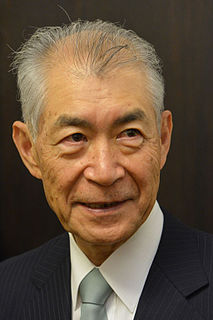
Tasuku Honjo is a Japanese physician-scientist and immunologist. He won the 2018 Nobel Prize in Physiology or Medicine and is best known for his identification of programmed cell death protein 1 (PD-1). He is also known for his molecular identification of cytokines: IL-4 and IL-5, as well as the discovery of activation-induced cytidine deaminase (AID) that is essential for class switch recombination and somatic hypermutation.

Ziv Carmon is the Dean of Research, Professor of Business Administration, and holder of The Alfred H. Heineken Chaired Professorship at INSEAD. An expert in human judgment and decision-making, he is best known for his research on placebo effects of commercial actions and on the endowment effect, and his presentations and teachings about Customer Insight.
Raymond Ethan Goldstein FRS FInstP is Schlumberger Professor of Complex Physical Systems in the Department of Applied Mathematics and Theoretical Physics (DAMTP) at the University of Cambridge and a Fellow of Churchill College, Cambridge.

A. James Hudspeth is the F.M. Kirby Professor at Rockefeller University, where he is director of the F.M. Kirby Center for Sensory Neuroscience. His laboratory studies the physiological basis of hearing.
The cuticulosome is a spherical, iron-rich structure located in the cuticular plate of auditory and vestibular hair cells in birds. Cuticulosomes are 300-600 nm in diameter and are composed of ferritin-like granules that in some cases are structured in paracrystalline arrays. Due to its specific location in sensory hair cells of the inner ear and its iron-rich composition it was proposed to be involved in the magnetic sense of birds. However, physical simulations and calculations showed that it lacks sufficient magnetic susceptibility to act as a torque based magnetoreceptor. An alternative hypothesis suggests that the cuticulosome might work as an intracellular electromagnetic oscillator to detect magnetic fields.
David Anthony Keays is an Australian neuroscientist who studies magnetoreception and neurodevelopment. He is currently a group leader at the Research Institute of Molecular Pathology (IMP) in Vienna, Austria, Chair of Organismal and Developmental Neurobiology at the Ludwig Maximilians University (LMU) in Munich, and Honorary Associate Professor at the University of Melbourne.
Ardem Patapoutian is an American molecular biologist, neuroscientist, and Nobel Prize laureate. He is known for his work in characterizing the PIEZO1, PIEZO2, and TRPM8 receptors that detect pressure, menthol, and temperature. Patapoutian is a neuroscience professor and Howard Hughes Medical Institute investigator at Scripps Research in La Jolla, California. In 2021, he won the Nobel Prize in Physiology or Medicine jointly with David Julius.
References
- ↑ Malkemper, E. Pascal; Eder, Stephan H. K.; Begall, Sabine; Phillips, John B.; Winklhofer, Michael; Hart, Vlastimil; Burda, Hynek (May 2015). "Magnetoreception in the wood mouse (Apodemus sylvaticus): influence of weak frequency-modulated radio frequency fields". Scientific Reports. 5 (1): 9917. Bibcode:2015NatSR...4E9917M. doi:10.1038/srep09917. ISSN 2045-2322. PMC 4413948 . PMID 25923312.
- ↑ "The Ig Nobel Prize Winners". Improbable Research. 2006-08-01. Retrieved 2020-04-14.
- ↑ Malkemper, E. Pascal; Kagerbauer, Daniel; Ushakova, Lyubov; Nimpf, Simon; Pichler, Paul; Treiber, Christoph D.; de Jonge, Martin; Shaw, Jeremy; Keays, David A. (January 2019). "No evidence for a magnetite-based magnetoreceptor in the lagena of pigeons". Current Biology. 29 (1): R14–R15. doi: 10.1016/j.cub.2018.11.032 . PMID 30620907.